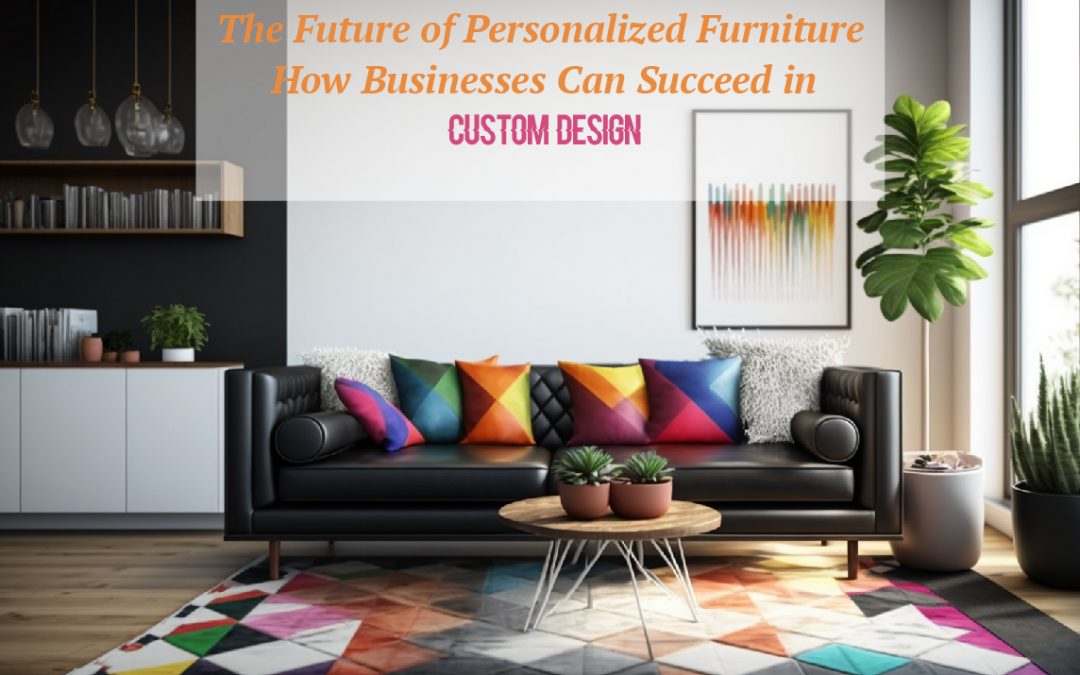In recent years, consumer preferences have shifted dramatically towards products that reflect individuality and unique tastes. This trend is particularly pronounced in the furniture industry, where customers increasingly seek personalized solutions that cater to their specific needs and aesthetic preferences. This shift presents both a challenge and an opportunity for furniture businesses to differentiate themselves in a competitive market.
The Rise of Personalized Furniture
Gone are the days of one-size-fits-all furniture solutions. Modern consumers crave products that reflect their unique tastes and lifestyles. Personalized furniture allows individuals to express their creativity and personality through bespoke designs tailored to their exact specifications. This shift isn’t just about aesthetics; it’s about creating meaningful connections between consumers and the products they bring into their homes.
Tools of the Trade: Innovations in Design and Manufacturing
Advancements in technology have played a pivotal role in democratizing the customization process. Tools such as Computer-Aided Design (CAD) software, virtual reality (VR), and 3D printing have revolutionized how furniture designs are conceptualized, visualized, and brought to life. CAD software enables designers to create intricate designs with precision, while VR allows customers to immerse themselves in virtual showrooms to visualize their personalized creations. 3D printing, on the other hand, offers the potential for on-demand manufacturing of custom pieces, reducing waste and lead times.
The Future Scope of Personalized Furniture
Looking ahead, the future of personalized furniture design is brimming with potential. As technology continues to evolve, so too will the possibilities for innovation. Imagine AI-powered design assistants that can predict consumer preferences and trends, or sustainable materials engineered for bespoke manufacturing. The convergence of these advancements promises a future where personalized furniture is not only accessible but also environmentally sustainable and economically viable.
Opportunities for Businesses
For furniture businesses willing to embrace personalized design, the opportunities are vast and varied:
- Market Differentiation: Stand out in a competitive market by offering unique, customized products that resonate with consumers on a personal level.
- Enhanced Customer Engagement: Foster deeper connections with customers through collaborative design processes and personalized shopping experiences.
- Scalable Solutions: Implement scalable technologies and business models that streamline the customization process while maintaining quality and efficiency.
- Global Reach: Tap into global markets with online platforms that facilitate remote customization and international shipping.
Key Points to Cover:
- Understanding the Shift: Explore why consumers are increasingly gravitating towards customized furniture options. Discuss the psychological and emotional appeal of owning personalized pieces that resonate with their identity and lifestyle.
- Technological Advancements: Highlight how advancements in technology, such as CAD (Computer-Aided Design) software, 3D printing, and digital rendering, have democratized the customization process. Discuss how these tools enable customers to visualize and personalize their furniture designs.
- Operational Challenges and Solutions: Discuss the operational challenges that furniture businesses may face when implementing customization services, such as inventory management and production costs. Provide insights into scalable solutions and best practices for integrating customization into existing business models.
- Marketing Strategies: Explore effective marketing strategies to promote personalized furniture offerings. Discuss the importance of storytelling and customer engagement in conveying the value of customization and building emotional connections with consumers.
- Case Studies and Success Stories: Showcase examples of furniture businesses that have successfully embraced customization. Highlight how these companies have differentiated themselves in the market, increased customer satisfaction, and fostered brand loyalty through personalized experiences.
- Future Trends and Opportunities: Predict future trends in personalized furniture design and customization technologies. Discuss emerging opportunities for innovation and growth in the evolving landscape of personalized consumer goods.
Best Options for Personalizing Furniture: Types of Wood and Finishing Materials
When it comes to personalizing furniture, the choice of wood and finishing materials can greatly impact the final product’s aesthetics, durability, and overall feel. Here are some of the best options for personalizing furniture to achieve a unique and high-quality result.
Types of Wood
- Oak
- Characteristics: Strong, durable, with a prominent grain pattern.
- Personalization Options: Oak can be stained in various shades from light to dark, giving it versatility in matching different decor styles. It can also be finished with a smooth or distressed texture for a rustic look.
- Walnut
- Characteristics: Rich, dark color with a smooth, fine grain.
- Personalization Options: Walnut is often left with a natural finish to highlight its inherent beauty but can also be stained or oiled to enhance its deep, warm tones.
- Maple
- Characteristics: Light-colored, hard, and smooth-grained.
- Personalization Options: Maple takes stains and paints well, allowing for a wide range of color options. It can be finished with a clear lacquer to preserve its natural look or painted for a bold statement.
- Cherry
- Characteristics: Reddish-brown color that darkens over time, with a fine, straight grain.
- Personalization Options: Typically finished with a clear or slightly tinted lacquer to showcase its natural aging process, cherry wood can also be polished for a high-gloss finish.
- Mahogany
- Characteristics: Deep, reddish-brown color with a straight, fine grain.
- Personalization Options: Often polished to a high gloss, mahogany can also be stained or oiled to deepen its rich color. It’s perfect for elegant and sophisticated furniture pieces.
Finishing Materials
- Leather
- Full-Grain Leather: The highest quality, durable, and develops a beautiful patina over time. Ideal for luxurious and timeless pieces.
- Top-Grain Leather: Slightly processed for a more uniform look, it’s durable and offers a balance between quality and cost.
- Split Leather: More affordable, softer, and often used in combination with other materials for a cost-effective yet stylish finish.
- Fabrics
- Velvet: Adds a touch of luxury and softness, available in a variety of rich colors. Great for statement pieces.
- Linen: A natural, breathable fabric that gives a casual yet elegant look. Perfect for summer and coastal themes.
- Microfiber: Durable, stain-resistant, and easy to clean, making it ideal for high-traffic areas or homes with children and pets.
- Wood Finishes
- Stains: Enhance the natural grain and color of the wood. Available in numerous shades to match any decor.
- Paints: Provide a solid color finish, allowing for bold customization. Chalk paint is popular for a matte, vintage look.
- Lacquers and Varnishes: Protect the wood while adding a glossy or matte finish. Lacquers offer a smooth, durable coating.
- Oils and Waxes: Enhance the natural beauty of the wood while providing protection and a subtle sheen. Ideal for a natural, organic look.
Customization Combinations
- Rustic Oak Dining Table with Distressed Finish and Leather Chairs
- Wood: Oak with a distressed finish.
- Chairs: Full-grain leather upholstery in a deep brown color.
- Modern Maple Bedroom Set with Painted Finish
- Wood: Maple painted in a sleek, matte black.
- Headboard Fabric: Velvet in a rich emerald green for a touch of luxury.
- Classic Walnut Living Room Set with High-Gloss Finish
- Wood: Walnut with a high-gloss lacquer finish.
- Cushions: Linen in neutral tones for a sophisticated and timeless appeal.
- Elegant Cherry Wood Office Desk with Natural Finish
- Wood: Cherry with a clear lacquer to highlight its natural aging process.
- Chair: Top-grain leather in a dark burgundy.
- Sophisticated Mahogany Bookshelf with Stain and Oil Finish
- Wood: Mahogany stained to deepen its rich color, finished with oil for a glossy sheen.
- Accents: Brass hardware for an elegant touch.
Conclusion
In conclusion, the shift towards personalized furniture represents not just a trend, but a fundamental transformation in consumer expectations and business opportunities. By embracing custom design, furniture businesses can forge deeper connections with customers, differentiate themselves in a competitive market, and pave the way for sustainable growth. As technology continues to advance and consumer preferences evolve, those at the forefront of personalized furniture are poised to lead, innovate, and thrive in this dynamic era of customization.












